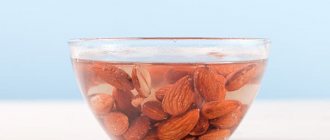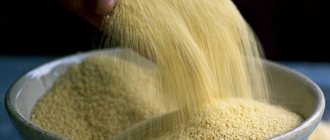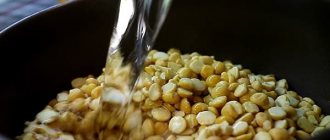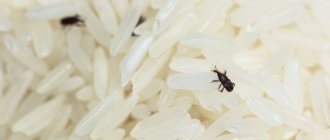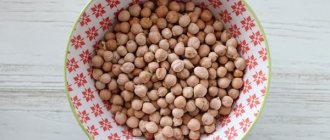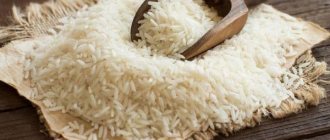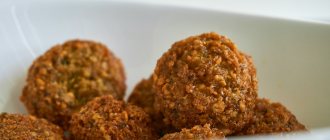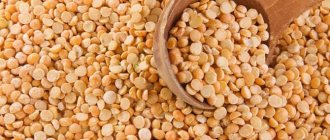Natalia Belais is a health and nutrition coach and a graduate of the Institute for Integrative Nutrition in New York. She teaches a course on healthy eating in Moscow, develops healthy menus for healthy restaurants and for her own restaurants in Spain - for example, the famous Organic Market & Food in Marbella.
Natalia Belais
Content
- 1. Legumes
- 2. Nuts
- 3. Cereals
- 4. Seeds and sunflower seeds
- 5. Secrets of soaking
To revive each grain and neutralize antinutrients such as phytic acid, protease inhibitors, lectins, etc., you need... water and time.
How long to soak? The soaking time for each type of seed is different and depends on the amount of antinutrients in them.
- How to make mascarpone at home: 7 best recipes
What is activation of nuts, seeds, legumes and grains
Most nuts, seeds, beans and grains contain antinutrients. These are tannins (enzyme blockers), polyphenol, lectin and phytic acid. They protect natural products from harmful insects and protect them from destruction at an early stage of ripening. But antinutrients block vitamins and minerals and can also cause health problems. And here comes the time for activating the above products, that is, in other words, soaking!
Main benefits of activation:
- better absorption of microelements (vitamins, minerals and amino acids)
- reduction in carbohydrate component
- facilitating the work of the digestive organs
- improved taste due to washing off tannin from the surface of the grains during soaking.
Basic activation rules
- Products must be raw and not processed in any way. They should not be fried, salted, or covered in chocolate. And of course decent quality.
- Larger nuts and grains require longer soaking.
- Do not overdo it with soaking time: if it is soaked for too long, the taste may change and the amount of nutrients may decrease.
- It is best to soak food in water at room temperature and leave it at the same temperature.
- When soaking, add 2 tbsp. l. lemon juice or 1 tbsp. l. apple cider vinegar.
- The water should cover the food by 3 cm.
Secrets of activating nuts, seeds, legumes and cereals
The easiest way to soak grain is to leave it in water overnight at room temperature and rinse it in the morning.
To get rid of antinutrients and become easier on your digestion you will need:
- for green buckwheat, quinoa, millet, rice – 8-12 hours
- for flax seeds – 8 hours
- for sunflower seeds – 4 hours
- for almonds – 8-10 hours
- for pecans – 4-6 hours
- for cashews and walnuts, low in antinutrients – 1-2 hours
Soaked grains require less cooking time (20%) and less water during cooking (25%).
The soaked nuts can then be dried in an oven at 50°C for a few hours or dehydrated (dried) for 24 hours until they are completely dry. Make sure of this, otherwise mold may develop during storage.
Products should be stored in a tightly closed container; shelf life can be up to several months.
Healthy and mindful food can be delicious and beautiful if you cook it with soul. Photo from the book “ORGANIC every day”
How to soak nuts
- Almonds – from 12 hours;
- Brazil nut – from 12 hours;
- hazelnuts – from 8 hours;
- pecan nut – from 8 hours;
- walnuts – from 8 hours;
- cashews – from 6 hours;
- macadamia nuts – from 4 hours;
- pine nuts - no need to soak.
Why the love of seeds and nuts is dangerous - read here
When you can't cook
One day, my family of five and I had to rent a room. However, it was only possible to spend the night in it. There was no way to cook or cook. The option of having a bun and coffee for breakfast in a cafe did not suit us. Because in the morning we needed to have a good breakfast. And for this occasion we had a saucepan, a bag of buckwheat, and nuts and raisins.
In the evening we put a portion of buckwheat in a saucepan, filled it with cold water and went to bed. And in the morning they opened the pan with porridge. Yes Yes! Overnight, the buckwheat swelled, became soft and even edible. And the most interesting thing is that there was no longer any water in the pan! Just porridge.
By adding nuts and raisins, we had an excellent breakfast for five. And in cramped conditions! Of course, it’s worth saying that this buckwheat tastes a little different from boiled buckwheat. But if you still decide to cook it, then you will only need 5 minutes.
How long to soak cereals
(not crushed or heat treated)
- Barley – from 12 hours;
- oats, oat flakes – from 10 hours;
- rye – from 12 hours;
- spelled – from 8 hours;
- wheat – from 12 hours;
- pearl barley – from 12 hours;
- millet – from 8 hours;
- white rice – from 30 minutes;
- brown rice – from 3 hours;
- wild rice – from 5 hours;
- buckwheat (kernel) – from 5 hours;
- Basmati rice – from 30 minutes.
Cereals or flakes?
Today, leading nutritionists both here and abroad agree that cereals are the healthiest for our body.
Since minimally processed or even whole grain cereals contain a maximum of vitamins and microelements. Therefore, they should be included in your diet.
What about cereal? Of course, cereal is healthier than sausage. But some of the substances necessary for humans are irretrievably lost when cereals are mechanically converted into flakes. In addition, if the flakes are also subjected to heat treatment (instant flakes), then this is a completely unhealthful product. If these are also sweet cereals, then this means that this is not food, but sweets.
Why are cereals so popular today? The answer is clear - they prepare quickly. Some cereals cook in minutes.
So one of the reasons why soaking grains before cooking is to reduce cooking time.
For example, in the morning, there is a catastrophic lack of time to have breakfast. But if we take care of this in the evening, then in the end we get cereal that needs to be cooked not for 10-15 minutes, but for 5-7 minutes. Moreover, we have an advantage over cereal lovers.
Because even for a lower price we get a rich set of natural vitamins and microelements. Consequently, now you don’t have to go to the pharmacy for synthetic ones, which are still unclear how they are absorbed.
So, there is a double saving. Cereals are cheaper than flakes. And good vitamins at the pharmacy are expensive.
I think that for the sake of such a win, it’s worth taking a minute in the evening to pre-soak the cereal.
This way you will have a super breakfast in the morning. But many people have no idea about such possibilities. Of course, all those who regularly eat breakfast benefit. But if it is porridge made from whole grain cereals, then you have a multiple advantage.
How long should seeds and seeds be soaked?
- Sunflower – from 8 hours;
- pumpkin – from 8 hours;
- flax – from 6 hours (do not rinse after soaking!);
- poppy – from 6 hours;
- quinoa – from 3 hours;
- amaranth – from 3 hours;
- sesame – from 6 hours.
Soaking in water not only neutralizes harmful substances in grains, but also activates beneficial ones - the nutritional value of grains or nuts increases.
Should you soak the seeds for husking? No, there is no point in soaking roasted sunflower or pumpkin seeds in their shells.
- Pumpkin soup with croutons
Do I need to soak flax and chia seeds?
Yes. But we don’t rinse it before soaking. Grind flax for smoothies and live porridges after soaking.
What is healthy eating from an expert's point of view?
A healthy diet is a diet:
- various;
- 80% plant-based;
- moderate - the stomach should be 80% full;
- mostly (80%) correct and only 20% - with deviations from the rules;
- based on your body's needs;
- with well-chewed food (each piece should be chewed 20 times);
- requiring attention: you need to focus on eating without being distracted by your phone, TV or reading.
Healthy nutrition and a healthy lifestyle are impossible without correct and established habits. Your body needs physical activity: choose the sports and intensity of exercise that suit you. It is important that you like them and are regular. And control your stress levels by breathing and relaxing.
My opinion
I'm not a radical. I love balance and try to find a compromise in all areas of life, without getting hung up on the issue. To be honest, it’s not fundamentally important for me whether I soak buckwheat today or not. More often than not, I proceed from the practicality of my actions and saving time.
In general, my principle is 50x50: I soak long-cooking cereals and legumes, but I can cook quick ones right away.
It should be noted that soaked cereals cook much faster and, in my opinion, they turn out tastier (especially buckwheat), richer or something. (I don’t like dry, crumbly porridge).
Soaking seeds: preparations to stimulate germination
Another good rule for soaking seeds is to use not just water, but a solution of some kind of growth stimulant. You can prepare such solutions yourself (all recipes are HERE), or you can buy proven biological products in the store and soak the seeds in them. Gardeners consider the most popular and effective stimulants to be:
- Zircon is one of the most powerful biological products. It contains chicory acid, which promotes rapid seed germination, seedling development and the growth of a powerful root system.
- Epin is an analogue of natural biological stimulants that stimulates germination, helps plants adapt to unfavorable environmental factors, strengthens their immunity, and increases productivity.
- Humates (Energen, Humate +7 and others) are preparations created on the basis of humic acids with the addition of necessary microelements. They have a positive effect on seed germination, seedling survival rate, and help increase yield.
The most famous antinutrients:
- Phytic acid. It reduces the absorption of microelements by as much as 80%. Therefore, if you do not neutralize it, there will be a chronic deficiency of minerals, deterioration of metabolism, mental retardation, and anemia.
- Enzyme inhibitors. If you do not neutralize them, then headaches, memory loss, allergies, loss of strength, and stomach upset occur.
- Lectins
These are natural pesticides. They can be found in both plant and animal products. They are poorly digested, damage the intestines, cause diarrhea and bloating.” They provoke the development of hormonal and insulin immunity.
The value of buckwheat
Buckwheat is sold in the form of whole kernels - kernels, chopped - prodel, in the form of smoothed grains peeled from the shell - Smolenskaya, green buckwheat - unroasted raw grains - is gaining popularity.
You can prepare healthy and tasty dishes from each type of buckwheat.
Useful properties of cereals
- improves the functioning of the cardiovascular system, normalizes cholesterol levels, vascular elasticity;
- removes excess fluid, relieves swelling, restores the functions of the excretory system;
- green buckwheat is a natural antioxidant, removes toxins, free radicals, recommended for radiation sickness;
- helps restore the body’s reproductive abilities; the presence of folic acid is crucial in the first trimester of pregnancy for the normal course of gestation, as well as fetal development;
- has a general strengthening, immunomodulatory effect;
- reduces weight, stimulates metabolic processes;
- restores energy potential after severe, protracted illnesses.
Energy value - 100 g of dry buckwheat contains 310 kcal; during cooking, the calorie content decreases, and in 100 g of finished porridge it is already 110 kcal.
It is recommended to consume it 2-3 times a week for breakfast or lunch; before 15:00, all useful elements are absorbed, and carbohydrates do not have time to turn into fat deposits. Dishes made from buckwheat (preference for green) are recommended for people with infectious diseases, pathologies of the heart, blood vessels, diabetes mellitus, problems with the kidneys, liver, and obesity. The absence of gluten allows it to be included in the gluten-free diet menu. Buckwheat also has a positive effect on the nervous system, improves cognitive abilities, and increases resistance to stress.
Compound
- carbohydrates - 60%, proteins -13%, fats 3%, water -15%;
- vitamins B1, B2, folic acid, E, PP;
- mineral complex - zinc, iron, iodine, potassium, phosphorus, calcium, copper;
- organic acids - linoleic, malic, oxalic, maleic, citric.
The only contraindication can be excessive consumption, which should be limited to 2 times a week for pregnant women and patients with diseases of the digestive tract. A balanced diet also excludes a mono-diet, the basis of which is cereal.
Preparing to soak seeds
We don’t need anything supernatural to carry out the seed soaking procedure.
Only the seeds themselves, a wide container (saucer, plate, shallow glass or plastic container), you may need gauze or cotton pads, a growth stimulator (optional) and, of course, water. Ideally, the water should be spring, melt, or at least bottled. This is for the fans. By and large, tap water is fine. Especially if you let it sit for at least a day.
"System update"
Recently, nutritionists have rehabilitated phytic acid and began to convert it from “dead” antinutrients into living ones. The results of the research were the following conclusions:
- The harmful properties of phytates (compounds of phytic acid with minerals) appear only with their high consumption on a strict diet. That is, during a hunger strike, when no nutrients enter the body at all, phytates begin to harm. And a healthy diet excludes “phytic harmful substances.”
- Phytates should be considered beneficial antioxidants that can significantly reduce the risk of chronic diseases.
Such hidden explanations and clarifications are suddenly revealed, and the answer that previously seemed correct is already in doubt.

